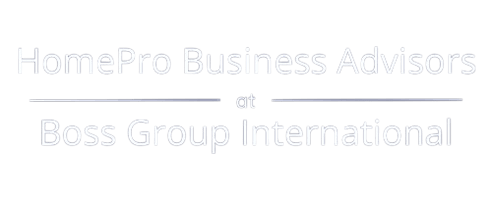Understanding Your Financials: Key Metrics Every Home Service Business Owner Should Know
For many home service business owners, financial management can feel overwhelming. Between managing day-to-day operations, handling customer service, and overseeing employees, it’s easy to overlook the numbers that truly drive profitability. However, understanding and tracking key financial metrics is essential, not just for growing your business but also for ensuring that it remains attractive to potential buyers if you ever decide to sell.
Your financials tell the story of your business. They reveal whether you’re making money efficiently, where costs are eating into your profits, and what areas need improvement. Whether you run an HVAC company, a landscaping service, or a roofing business, knowing how to analyze your financials can help you make informed decisions that lead to long-term success.
Revenue vs. Profit: Knowing the Difference
Many business owners focus on top-line revenue - the total amount of money coming into the business. While growing revenue is important, it doesn’t mean much if your expenses are eating up all your earnings. Profitability is what truly matters, and there are two key types of profit to understand:
Gross profit is what’s left after subtracting the direct costs of providing a service, such as labor and materials. This number tells you whether your pricing structure is effective and if you’re charging enough to cover your costs.
Net profit is what remains after covering all expenses, including overhead, marketing, and administrative costs. This is the true measure of your business’s financial health.
A business with high revenue but low net profit is not as strong as one with lower revenue but better margins. If your net profit margins are too thin, it may be time to reassess your pricing, cut unnecessary expenses, or improve operational efficiency.
Cash Flow: The Lifeblood of Your Business
Many profitable businesses still struggle because of poor cash flow management. Cash flow refers to the movement of money in and out of your business - how much cash you actually have available at any given time. Unlike net profit, which looks at earnings over a set period, cash flow determines whether you have enough liquidity to pay bills, employees, and suppliers.
One of the most common cash flow issues in home service businesses is delayed payments. If customers take too long to pay invoices, it can create a cash crunch, even if your business is technically profitable. Implementing policies like upfront deposits, automated invoicing, and follow-up reminders can help maintain a steady flow of cash.
Tracking your cash flow regularly helps you anticipate shortfalls before they become problems. A business with strong cash flow can reinvest in growth, handle unexpected expenses, and stay financially stable year-round.
Cost of Goods Sold (COGS) and Expense Management
The cost of goods sold (COGS) includes all direct expenses associated with delivering your services, such as materials, equipment, and labor. Keeping these costs under control is crucial for maintaining healthy profit margins.
Many home service businesses face creeping costs that erode profitability over time. Regularly reviewing supplier pricing, negotiating better deals, and ensuring efficient labor management can help keep expenses in check. Additionally, avoiding waste such as excess material orders or unnecessary overtime can significantly impact your bottom line.
Beyond direct costs, overhead expenses like rent, vehicle maintenance, marketing, and office administration should also be closely monitored. Every dollar saved in expenses translates directly into higher profits.
Customer Acquisition Cost (CAC) and Lifetime Value (LTV)
Understanding how much you spend to acquire a new customer versus how much revenue that customer generates over time can help fine-tune your marketing and sales strategy.
Customer acquisition cost (CAC) measures how much you’re spending on advertising, promotions, and sales efforts to land a new client. If CAC is too high, it means you’re spending more to attract customers than they’re worth to your business.
On the other hand, lifetime value (LTV) calculates the total revenue a customer brings to your business over the duration of their relationship with you. A business that retains customers through recurring services, such as maintenance plans or seasonal contracts, tends to have a higher LTV.
The goal is to keep CAC as low as possible while maximizing LTV. Strategies like customer referrals, repeat business incentives, and subscription services can help increase the value of each customer while keeping acquisition costs manageable.
Debt and Financial Leverage
Many business owners take on loans or financing to grow their operations. While strategic use of debt can fuel expansion, excessive debt can become a burden. Tracking your debt-to-equity ratio, the amount of debt compared to the value of your business, can help ensure you’re not overleveraged.
When preparing a business for sale, high debt levels can be a red flag for buyers. They want to see a company with manageable liabilities and a history of smart financial decisions. If your debt load is too high, prioritizing debt reduction before listing your business can make it more appealing to potential buyers.
Why Strong Financials Increase Business Value
If you’re considering selling your home service business in the future, having clean, well-documented financials will play a significant role in determining its value. Buyers want to see a business with consistent revenue, solid profit margins, and predictable cash flow. The more transparent and organized your financial records are, the easier it will be to negotiate a strong selling price.
A business with strong financials also has a competitive edge in the market. Lenders are more likely to approve loans for expansion, partners and investors are more confident in its stability, and customers are more likely to trust a company with a well-run operation.
Beyond just preparing financial statements for tax purposes, keeping detailed financial records and regularly reviewing key metrics helps you stay in control of your business. It allows you to make data-driven decisions rather than relying on guesswork.
Final Thoughts
Understanding your financials isn’t just about balancing the books, it’s about ensuring the long-term success and profitability of your business. Tracking key metrics like revenue, profit margins, cash flow, and customer acquisition costs gives you the insights needed to run a more efficient, profitable, and ultimately more valuable business.
If you’re looking to improve your financial management or thinking about selling your home service business, we can help. As a business brokerage specializing in the sale of home service companies, we provide guidance on maximizing value, streamlining operations, and preparing for a successful sale.
Contact us today for a free consultation, and let’s discuss how to position your business for long-term success and a profitable exit when the time is right.


